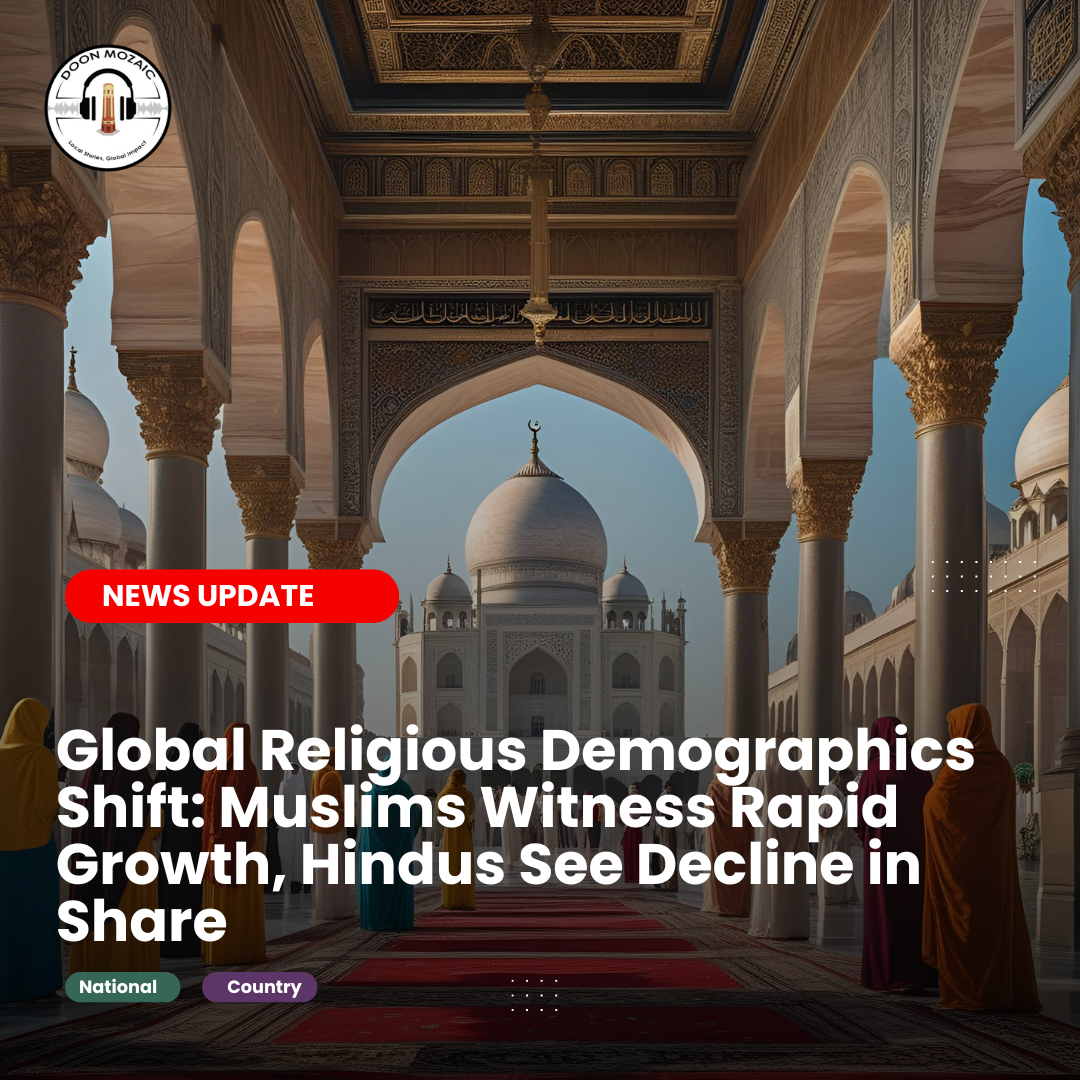By: Doon Mozaic News Team | Date: June 10, 2025
New Delhi – A major shift in global religious demographics is underway, as revealed by the Pew Research Center’s latest Global Religious Landscape Study published on June 9. The report highlights that the Muslim population grew faster than any other religious group worldwide between 2010 and 2020, while most other major religions, including Hinduism, saw a decline in their share of the global population.
Muslim Population Crosses 2 Billion
According to Pew, the number of Muslims grew from 1.7 billion in 2010 to 2.0 billion in 2020 — a 21% increase, compared to the 10% growth in the overall world population during the same period. This has raised the Muslim share of the global population from 24% to 26%.
Experts believe this shift signals more than just religious dynamics — it represents a transformation that could influence socio-political and cultural structures globally in the coming decades.
India, Pakistan, and Indonesia: Home to One-Third of the World’s Muslims
One-third of the world’s Muslims live in just three countries — India, Pakistan, and Indonesia. India has 213 million Muslims (15% of its population), slightly behind Indonesia, which has around 240 million Muslims (12% of the world’s Muslim population). Notably, India is the only one among these with a Muslim minority.
Regional Trends: North America Sees Fastest Growth
Regionally, North America saw the highest growth in Muslim population — a 52% increase to 5.9 million. It was followed by Sub-Saharan Africa, where the Muslim population rose by 34% to reach 369 million.
In the Asia-Pacific, Muslims now make up 26% of the region’s population, a 1.4% rise. However, the region’s share of the global Muslim population fell from 61% in 2010 to 59% in 2020. The study notes that Sub-Saharan Africa now hosts 18% of the world’s Muslims — a 2% increase.
Hindu Population: Stable Growth, but Slight Decline in Share
Globally, Hinduism remains the fourth largest religion after Christianity, Islam, and the religiously unaffiliated. The Hindu population increased by 12%, from 1.1 billion to 1.2 billion. However, their share in the world population fell slightly from 15.0% in 2010 to 14.9% in 2020.
South Asia, including India, Nepal, Pakistan, and Bangladesh, recorded a marginal decline (less than 5%) in the Hindu share of the population. Despite this, around 99% of the world’s Hindus still live in the Asia-Pacific.
Migration Drives Hindu Growth in Middle East, North America
Interestingly, Hindu populations grew rapidly in regions like the Middle East–North Africa (up 62%) and North America (up 55%), driven primarily by economic migration. For instance, Hindus now make up 3.6 million in North America and 3.2 million in the Middle East–North Africa.
Geographically, the Hindu population concentration in Asia-Pacific dipped slightly (by 0.2%), while it rose in North America and the Middle East by 0.1% each.
India: Changing Religious Demographics
A separate study titled “Share of Religious Minorities – A Cross-Country Analysis (1950–2015)” published in May 2024, reflects similar trends within India. It found that:
- Muslims increased their population share from 9.84% in 1950 to 14.09% in 2015 (a 43.15% rise).
- Hindus declined from 84% to 78% (a drop of 7.85%).
- Christians and Sikhs also saw a drop of 5.38% and 6.58%, respectively.
Fertility Rate and Social Indicators Among Muslims in India
The National Family Health Survey (NFHS-5) published in May 2022 revealed that Muslims have the highest Total Fertility Rate (TFR) in India at 2.36, compared to the national average of 2.0. Among religious groups, Buddhists had the lowest TFR at 1.4.
Additionally, teen pregnancy was highest among Muslim girls aged 15–19 years (8%). Also, only 64% of married Muslim women (aged 15–49) said they did not want another child, compared to 71% of Hindus and 72% of Sikhs.
Conclusion: A Redefining Shift in Global Demographics
The data paints a clear picture — Islam is growing not just in numbers but in global presence, while Hinduism, though culturally deep-rooted, is seeing a relative decline in demographic weight. While migration, fertility rates, and socio-economic factors drive these trends, the implications reach far beyond population figures.
These shifts could significantly shape future global politics, economic strategies, and cultural discourses.
Discover more from The Doon Mozaic
Subscribe to get the latest posts sent to your email.



